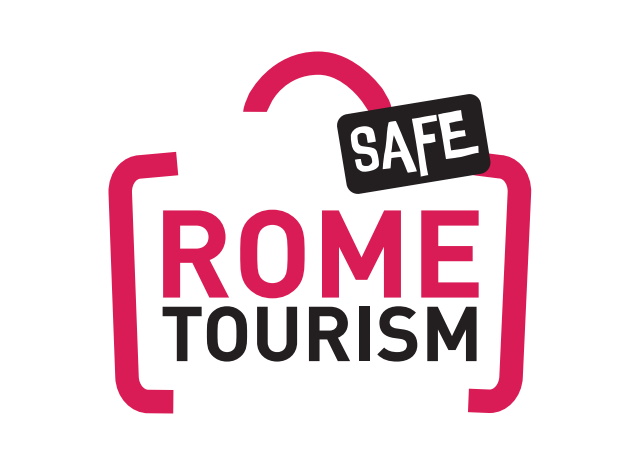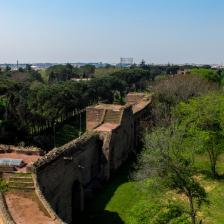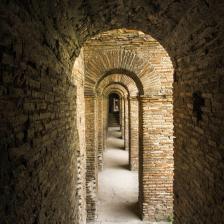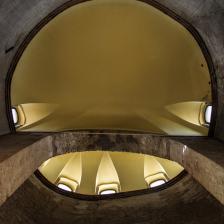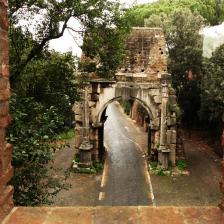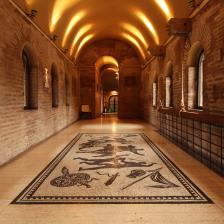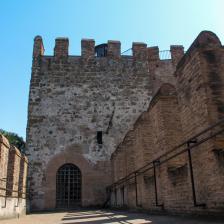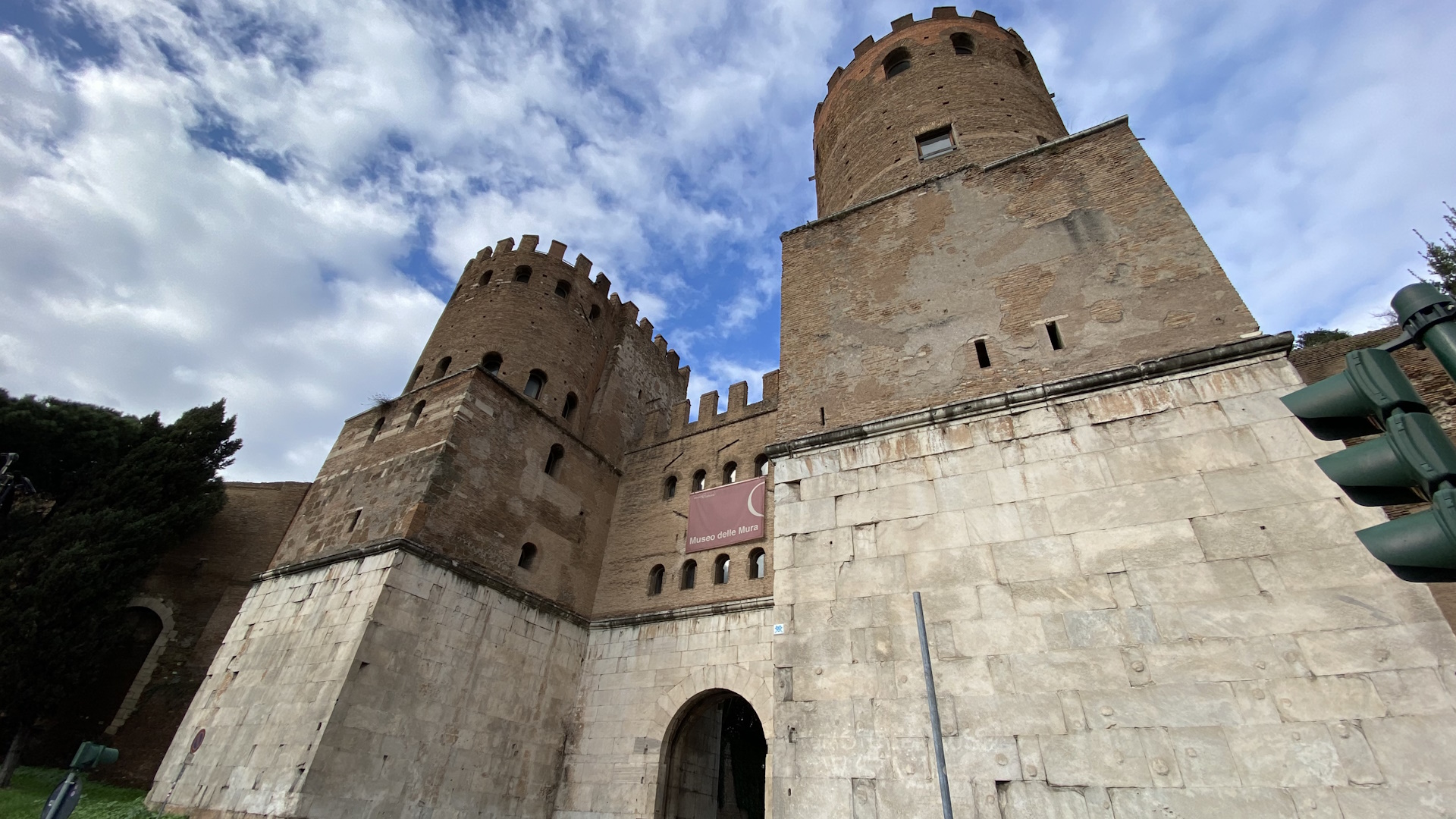
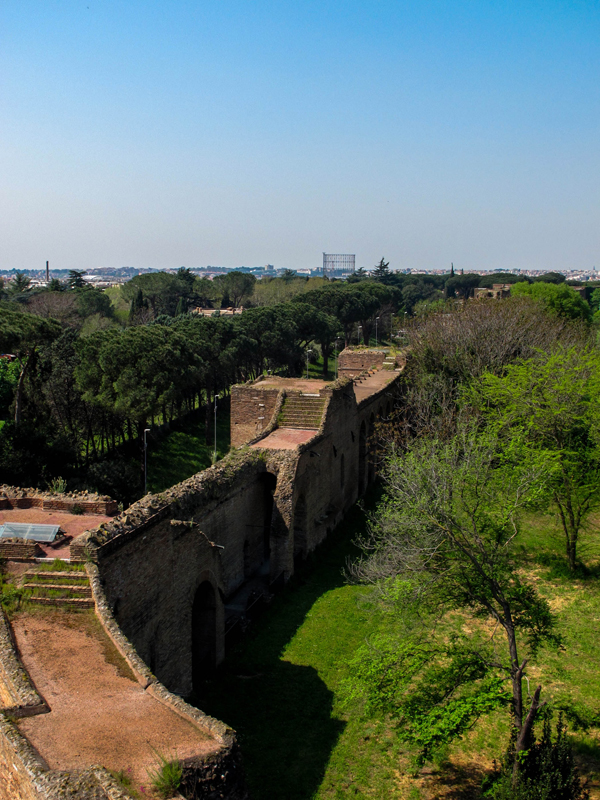
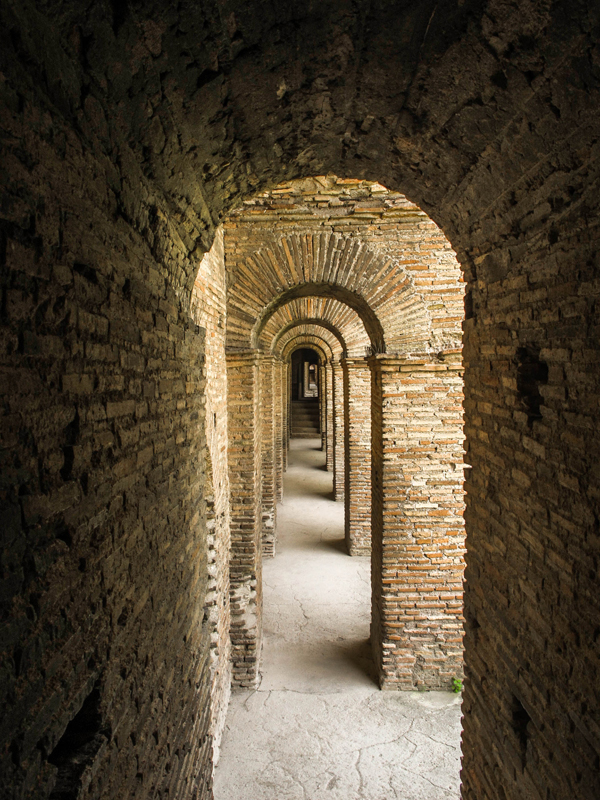
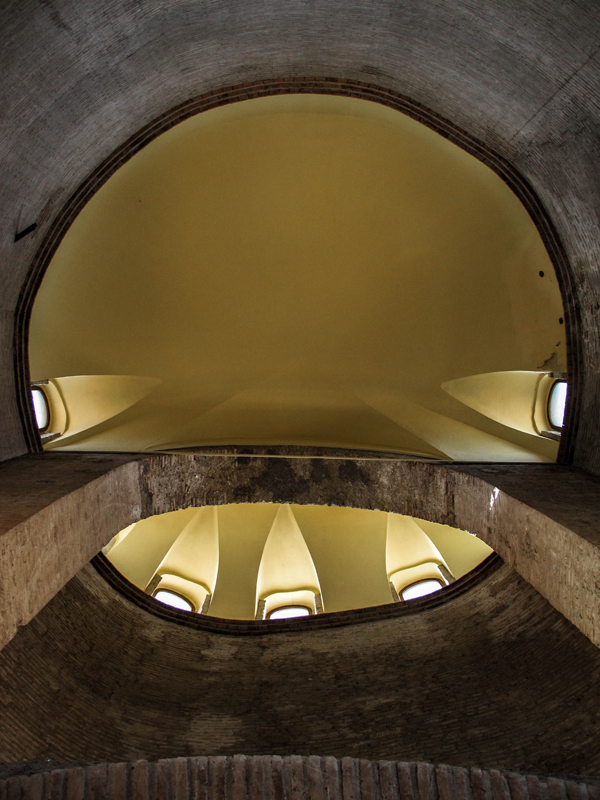
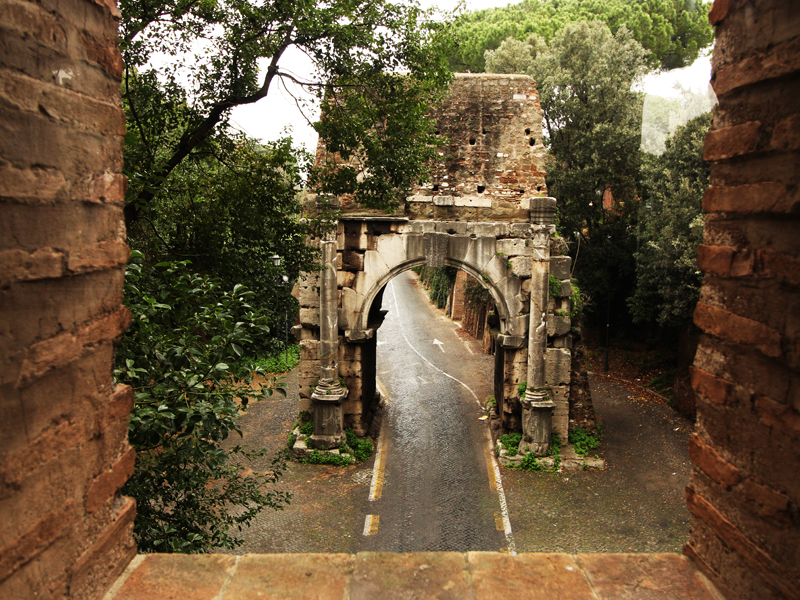
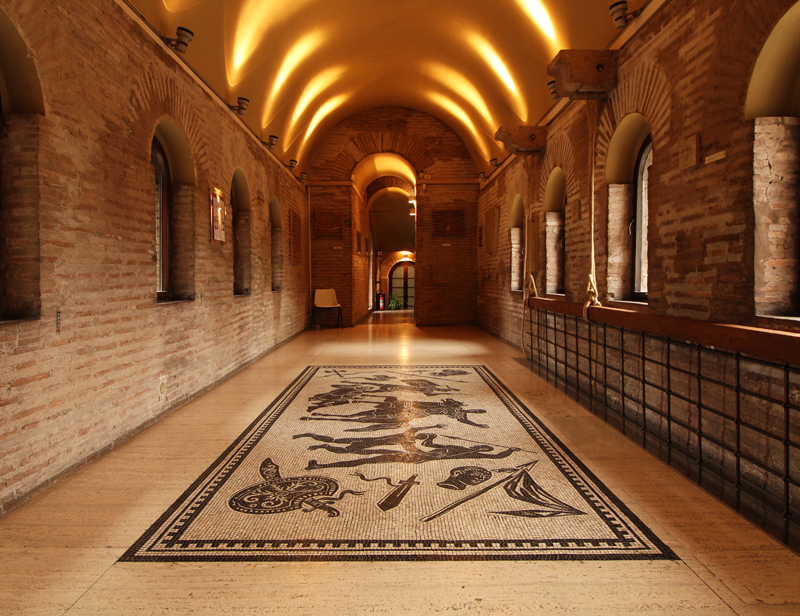
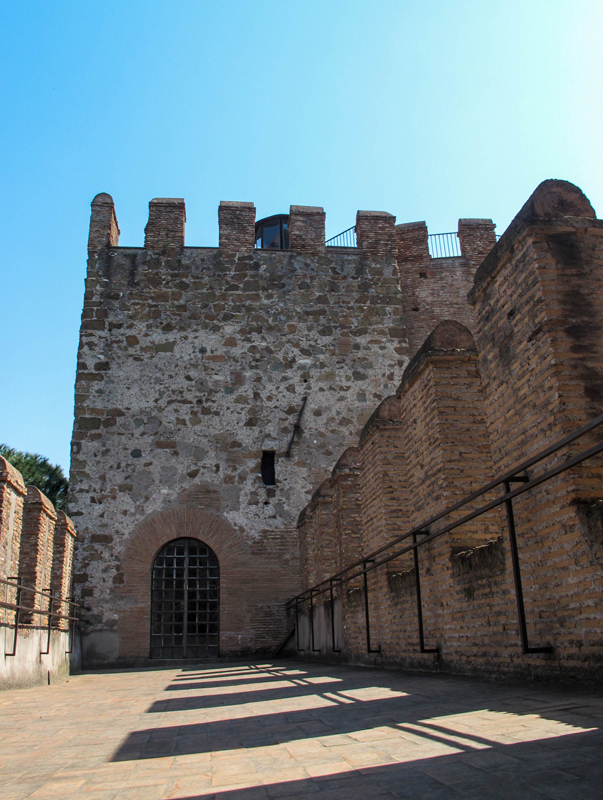
Inside Porta San Sebastiano, one of the biggest and best-preserved inside the Aurelian Walls, is the Museum of the Walls. Divided into three sections - ancient, medieval and modern - it traces the history of the city's fortifications, from the Royal and Republican period to Aurelian in the 3rd century AD.
Room I - Didactic Hall
Set up in the west tower with a screen for video projections, it has a three-colour mosaic (1940-1943) on the travertine floor depicting two deer and a tiger in ambush with surrounding vegetation.
Room II
This room overlooks the entrance arch of Porta San Sebastiano and connects the two great towers. Here, you can observe the didactic panels dedicated in part to the Pomerium and the oldest walls of ancient Rome, dating back to the 6th and 4th centuries B.C., those relating to the Aurelian Walls, the historical and political events that determined their construction, the building technique, the typology of the gates, the transformations and restorations of the following centuries, and the one dedicated to the war machines used during the sieges of the city. Also displayed along the walls are plaster casts of the crosses carved above the arch of some of the doors, the palmette and ray decorations, all dating back to the beginning of the 5th century AD, when the walls were doubled in height. The travertine consoles in which the ropes that manoeuvred the grating that closed the entrance arch flowed are also visible.
Room III
Located in the eastern tower, it houses four models reconstructing the walls and circuit of the royal, republican and Aurelian fortifications.
Room IV
A small space next to the west tower houses the architectural vicissitudes of Porta San Sebastiano from the 3rd to the 5th century A.D., after which it acquired the monumental appearance that we can still admire today, and a brief description of the other doors of the city walls.
Room V
Located in the western tower, it contains explanatory panels and a reconstructive plastic model - reproducing the stretch of wall between the Porta Asinaria and the Castrense Amphitheatre - information about the Appian Way and the different building techniques used by the Romans after the opera quadrata.
The museum also has an always-updated multimedia section, which includes a web series on the history of the museum, in-depth information on temporary exhibitions, and online activities and games for children to learn about and explore the museum's history and heritage from home.
Panoramic Terrace and Walkway
Absolutely worth a visit is the panoramic terrace of the central body of the door, which, set between the large crenellated towers, offers an evocative view as far as the eye can see from the Appian Way to the Castelli Romani, and the "walk along the walls", the original walkway, which can be enjoyed for about 400 metres as far as the fornixes of Via Cristoforo Colombo, and is the exciting crowning glory of the museum's educational itinerary.
A walk along the Appian Way
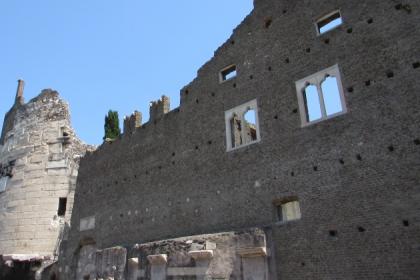
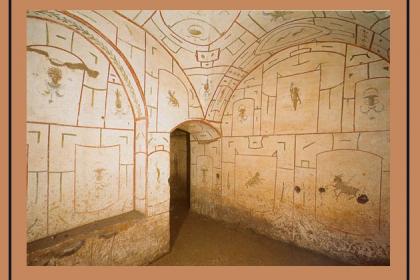
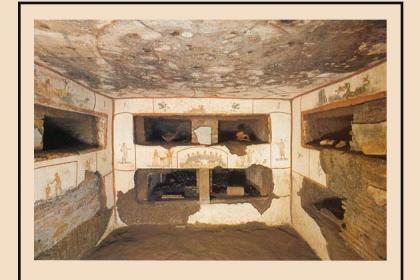
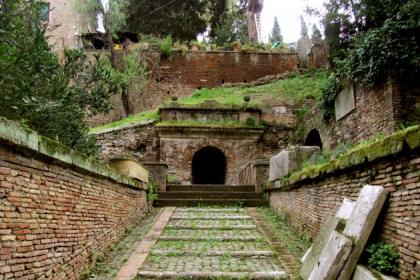
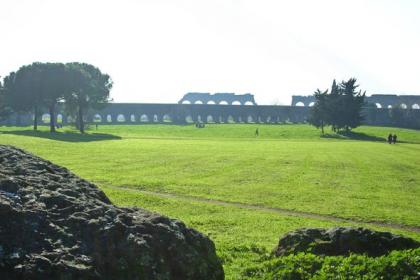
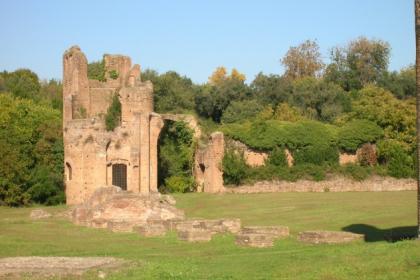
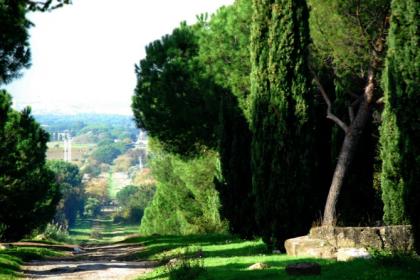
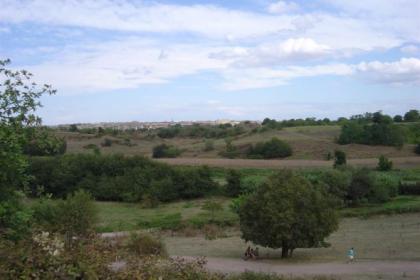
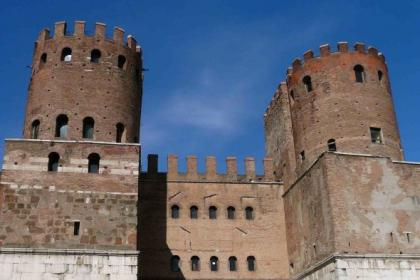
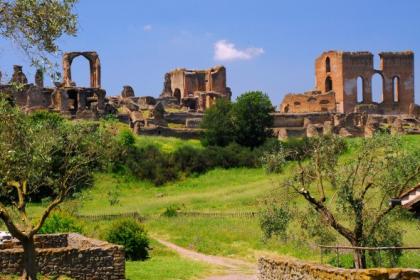
Discover the most famous and ancient Roman street
 Condividi
Condividi
Circus Maximus
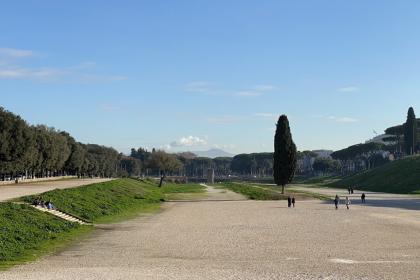
 Condividi
Condividi
The Aurelian Walls
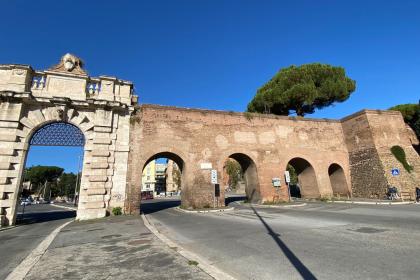
 Condividi
Condividi
Information
Last admission an hour before closing timeThe "Chemin de Ronde" can be visited during the Museum opening hoursFor updates and guidelines please check the > official websiteBefore planning the visit, CONSULT THE NOTICES
 Condividi
Condividi
Location
To find out about all accessibility services, visit the Rome accessible section.












































